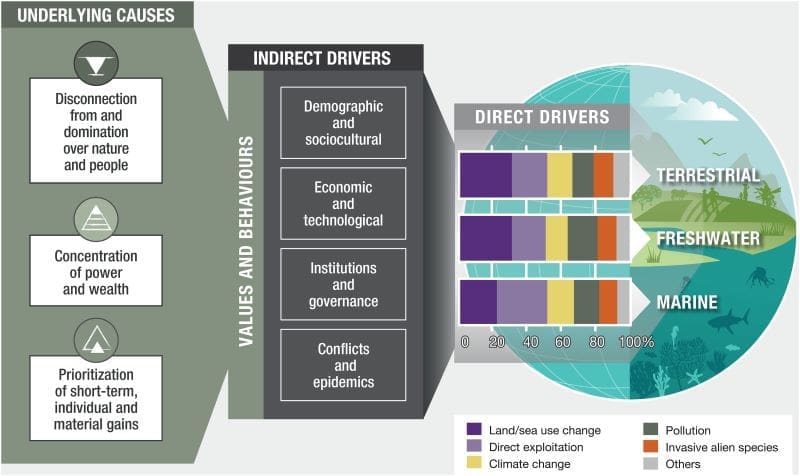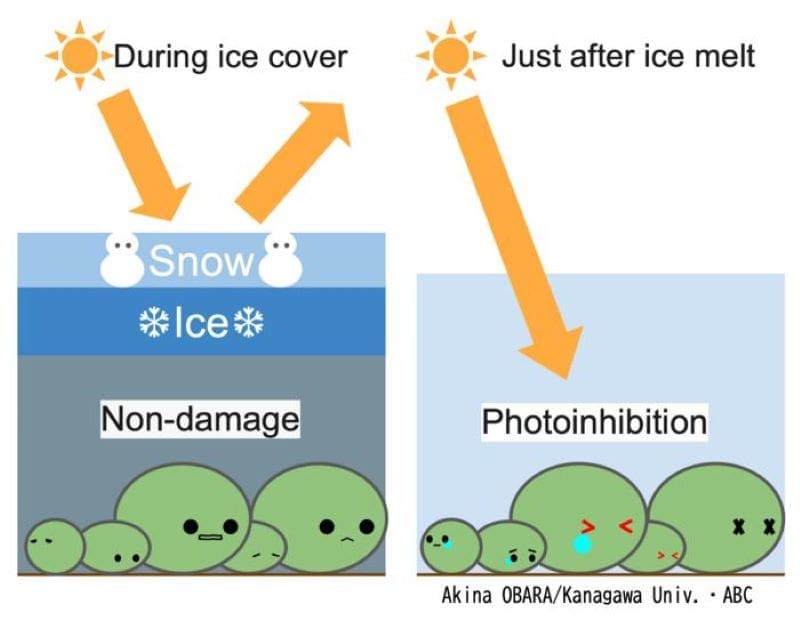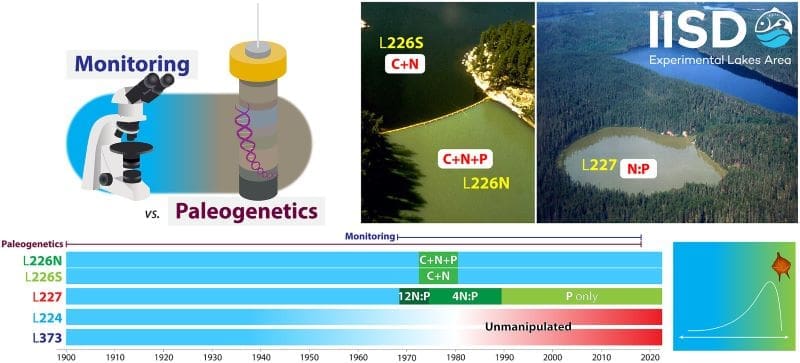Explore the latest insights from top science journals in the Muser Press daily roundup (October 1, 2025), featuring impactful research on climate change challenges.
In brief:
Intergovernmental platform on biodiversity issues an urgent call to stem decline of nature
Human-caused biodiversity loss has accelerated over the past fifty years. An opinion article published in the open-access journal PLOS Biology by a team of renowned international authors, including Anne Larigauderie, former Executive Secretary of Intergovernmental Platform on Biodiversity and Ecosystem Services (IPBES), concludes that stopping biodiversity loss is contingent on transformative social and cultural changes across multiple scales.
The IPBES Transformative Change Assessment is a 2024 report prepared by an interdisciplinary group of nearly 100 scientists and holders of Indigenous and local knowledge. It aims to inform the implementation of the Global Biodiversity Framework. In the published summary of the assessment, researchers explain why past efforts to address biodiversity loss have been ineffective, outline five strategies to achieve the 2050 Global Vision for Biodiversity and highlight options for action by different kinds of actors (including individuals) in implementing these strategies.
The three main reasons previous efforts to curb biodiversity loss have failed are:
1) disconnection from and domination over nature and people;
2) concentration of wealth and power in a minority of people, with disproportionate harm to the environment;
3) prioritization of short-term, individual, and material gains over long-term social and ecological sustainability.

The authors then propose five strategies to achieve transformative change. The first strategy involves incorporating both culture and ecology into conservation and restoration efforts. Strategy two is the integration of biodiversity concerns into the economic sectors most responsible for environmental degradation, including agriculture, fisheries, forestry, infrastructure, and energy. The third strategy focuses on finance and the economy, calling for redefining economic progress to account for ecological and social well-being metrics. Reforming governments to be more inclusive, accountable and adaptive is the penultimate strategy. The fifth and final strategy is a shift in societal values led by social movements, education, and communication.
According to the authors: “We emphasize that every person, group and organization has a role in pursuing the actions needed to create transformative change. Even small, incremental changes can contribute to transformative change when they enable shifts in views, structures and practices that address the underlying causes of biodiversity loss and nature’s decline. Indeed, the findings of the Assessment are an urgent call to action and a source of knowledge for concerted efforts across scales to pursue transformative change towards a just and sustainable world.”
Coauthor Karen O’Brien states: “The diversity of societies, economies, cultures and peoples means that no single theory or approach provides a complete understanding of transformative change or how to achieve it. Many knowledge systems, including Indigenous and local knowledge, provide complementary insights into how it occurs and how to promote, accelerate and navigate the change needed for a just and sustainable world.”
Coauthor Arun Agrawal notes: “The underlying causes of biodiversity loss and nature’s decline also create inequalities and injustices. Those who have benefited most from the economic activities associated with damage to nature – in particular, wealthy actors – have more opportunities and resources to create change. Doing so while involving others in balanced decision-making processes can unleash agency as well as resources to create change.”
Coauthor Lucas Garibaldi adds: “History has shown us that societies can transform at immense scale – as they did during the Industrial Revolution. While that era wrought terrible environmental and human costs, it stands as proof that fundamental, system-wide change is achievable, although it occurred over a much longer period of time than is needed for current transformative change for a just and sustainable world. To meet our shared global development goals today means we need to embark on a new transformation – one that urgently conserves and restores our planet’s biodiversity rather than depleting it, while enabling everyone to prosper.”
Journal Reference:
Larigauderie A, O’Brien K, Garibaldi LA, Agrawal A, ‘Transformative change to address biodiversity loss is urgent and possible’, PLoS Biology 23 (9): e3003387 (2025). DOI: 10.1371/journal.pbio.3003387
Article Source:
Press Release/Material by PLOS
Frequent wildfires, heat intensify air quality issues in American megacities such as New York City
Air quality in America’s largest cities has steadily improved thanks to tighter regulations on key sources of particulate pollution. However, increased heat, wildfire smoke and other emerging global drivers of urban aerosol pollution are now combining to create a new set of challenges for public health officials tasked with protecting millions of people on the East Coast.
Research from Colorado State University published in npj Climate and Atmospheric Science begins to unpack and characterize these developing relationships against the backdrop of New York City. The research quantifies how existing particulate pollution from sources such as vehicle exhaust or consumer products are now combining with wildfire smoke – transported from thousands of miles away – to create secondary, often more toxic, pollution or contribute to the formation of ozone in hot weather.

Professor Delphine Farmer in the Department of Chemistry led the research with data collected from continuous on-the-ground readings at a site on Long Island during the summer of 2023.
“We did not set out to study air quality, wildfire and heat in that way, but smoke from fires in Canada arrived and, unfortunately, that is likely to be more and more common in the future,” Farmer said. “Cities on the West Coast have been dealing with these combined issues for a while, but the developing situation in New York is a good test case to understand how variables like the nearby natural forests and denser populations on the East Coast may contribute to these emerging drivers of air pollution in megacities.”
Aerosol pollution consists of tiny particles of smoke or other compounds from many common sources such as cleaning solutions or cooking in restaurants. It can also occur naturally from the gases plants release every day. Hotter temperatures can cause plants to release more of those gases and speed the evaporation of some of those consumer products into particulate air pollution. Meanwhile, wildfire smoke particles absorb and react to those same gasses – further amplifying both natural and man-made sources of pollution. Because these particles can enter the lungs, they may lead to heart disease, cancer and even dementia, making them a key focus area for health regulation.
Farmer said the situation in New York presented an opportunity to start to untangle the relationships between sources and their impacts overall. Her team found evidence that 90 percent of the aerosol pollution found over the city was indeed sensitive to at least one aspect of these global changes, such as high temperatures – meaning effects from the pollutants were made worse during a heat wave, for example.
Some volatile chemical products such as paints and solvents are sensitive to these changes, and the team’s work shows that those sources are responsible for more than double the estimated contribution from cars to the city’s air pollution total in this category.
New York also has plenty of restaurants where the daily cooking and cleaning activities can contribute to overall pollution totals as well. However, the team found that while those emissions were also sensitive to the introduction of smoke or higher temperatures the effects were localized.
“We found that restaurants do have a big impact on their own local neighborhoods, but their associated aerosols are only a minor component of the total average load across the region,” Farmer said. “Still, any worsening of those conditions from the arrival of wildfire smoke – for example – could lead to environmental health inequality for those areas that health policy makers will need to consider.”
She added that context like that will help policy makers prioritize sources of pollution to target for both their overall contributions to the area’s air quality and their localized impact on public health.
Machine learning techniques aid research into urban air pollution

Emily Franklin led aerosol data collection on the ground and follow-up analysis for the project as a CSU postdoctoral fellow funded by the National Science Foundation. She has since taken a position as a research scientist at CSIRO, Australia’s national science agency.
Franklin said the team pulled measurements from many different instruments on the site and worked closely with fellow researchers from the universities of Minnesota, Columbia, Michigan and the University of California, Berkeley for the project. Together, these instruments generated thousands of individual indicators of aerosol composition, including characterization of hundreds of unique but unidentifiable compounds in the atmosphere. To take advantage of these complex measurements, she leveraged machine learning techniques.
“This was an incredibly rich and complex dataset. In a place like New York, you have compounds coming from trees in city parks, fires in Canada, construction sites miles away, and the barbecue joint up the road,” Franklin said. “Machine learning was a powerful tool allowing us to embrace this complexity and leverage it to better understand how all of these sources interact with the climate to make the air pollution experienced by the community.”
Funding for this project came from the National Oceanic and Atmospheric Administration as part of their AGES+ campaign, which is focused on improving air quality understanding through extensive, coast-to-coast observation using ground sites, research aircraft and satellite data.
The CSU team will now continue to study air quality in the region through the NSF funded GOTHAAM Campaign using a C-130 aircraft as a flying chemistry lab to measure atmospheric composition in real time across New York, New Jersey and Connecticut. That project focuses on volatile organic compounds – a broad term for gases from car exhaust, industry, vegetation and consumer products that react in the atmosphere to form ground-level ozone, secondary organic aerosols and particulate matter.
Farmer said measurements taken from the plane will give the team a better sense of the chemistry happening in the region as they will be able to get readings over the ocean and at different altitudes. Ideally, they will be able to provide more information to the millions of residents in the broader region about their air quality and potential health risks from it.
“We worry about what we are breathing on the ground but in reality, the chemistry happening above us has a big impact on that. This research project will again help us understand key interactions better and improve our ability to predict potentially hazardous air quality conditions,” she said.
Journal Reference:
Franklin, E.B., Rossell, R.K., Vermeuel, M.P. et al., ‘Emerging drivers of urban aerosol increase global change vulnerability in a US megacity’, npj Climate and Atmospheric Science 8, 333 (2025). DOI: 10.1038/s41612-025-01202-w
Article Source:
Press Release/Material by Josh Rhoten | Colorado State University
Beneath the ice: spring sunlight triggers photoinhibition and recovery in Lake Akan marimo
The marimo (Aegagropila brownii), a nationally designated Special Natural Monument of Japan, inhabits Lake Akan in Hokkaido, where environmental conditions fluctuate drastically with the seasons. Of particular concern is the period immediately after ice melt in early spring, when low water temperatures coincide with strong sunlight, posing a risk of severe damage to photosynthetic activity.

In this study, a research team led by the Astrobiology Center conducted a detailed assessment of marimo photosynthetic performance during this critical transition period, combining field observations with laboratory experiments. The results revealed that while marimo maintains healthy photosynthetic capacity in both summer and ice-covered winter conditions, their activity significantly declines just after ice melts. However, it was also found that marimo can recover this function over the following 20 to 30 days.
These findings provide valuable insight into the seasonal vulnerability of marimo and highlight the importance of spring as a critical period for conservation.
The study was published in the international journal Phycological Research.
Journal Reference:
Kono, M., Obara, A., Suzuki, Y., Iwamoto, A., Yoshida, K. and Oyama, Y., ‘Photoinhibition risk in marimo (Aegagropila brownii) during ice transition periods based on field observations and laboratory assessments’, Phycological Research (2025). DOI: 10.1111/pre.70013
Article Source:
Press Release/Material by National Institutes of Natural Sciences (NINS)
Microbial DNA sequencing reveals nutrient pollution and climate change reinforce lake eutrophication
The algal blooms increasingly seen in Canadian lakes have been linked to both nutrient pollution from agricultural runoff and climate change. However, a new Concordia-led study using DNA sequencing of lakebed microbes reveals that these two drivers amplify each other in ways that profoundly affect the health of lake ecosystems.
Using records and samples from the International Institute for Sustainable Development Experimental Lakes Area (ELA), a group of 58 lakes in northwestern Ontario designated freshwater research facilities, the researchers paired environmental monitoring data dating back more than five decades with paleogenetic reconstructions from lakebed microbes dating back more than a century.
By sequencing DNA found in lake sediments, the researchers got insight into past algal communities’ composition and compare them to communities today. This provided critical insight into how those communities changed over decades.

“The sediment DNA archives gave us a chronology of these lakes’ history,” says lead author Rebecca Garner, PhD 2023, and currently a postdoctoral fellow at the University of California, Berkeley. “This is the first study to show that we can reconstruct the community dynamics of that ecosystem and dramatically expands the diversity of microorganisms that we were able to study.”
The study was published in the journal Environmental Microbiology.
A double threat
The researchers examined sediment samples from five lakes in the ELA. Three had been fertilized by phosphorous and other nutrients and two were unmanipulated.
Samples from the fertilized lakes revealed rapid and dramatic changes in the algal communities, resulting in persistent blooms. These algal blooms are a clear indication of eutrophication, a process in which excessive nutrients fuel algal growth that consumes the lake’s oxygen, killing off fish and making the lake unsafe for recreation.
The unfertilized lakes had no such evidence of sudden change. However, there was evidence of gradual algal community growth around 1980, when regional air temperatures began to show sharp and sustained rises.
Using statistical modeling techniques, the researchers were able to see how algal communities were changing in response to fluctuations in nutrients and climate. They found that the strongest responses occurred when both nutrients and climate were affecting the ecosystem.
This contrast in algal community response shows that eutrophication is exacerbated by the combined effects of pollution and warming on the ecosystem. Together, these factors act to prime the ecosystem to become more unstable and more vulnerable to stresses brought about by climate change.
“This works expands on the monitoring work done at the ELA by adding an ancient DNA component to it,” says Garner’s thesis supervisor and co-author David Walsh, a professor in the Department of Biology in the Faculty of Arts and Science. “Using this new methodology allows us to look further back in time and to get a broader view on the community that is changing in the water column. It demonstrates that there is a synergistic interaction occurring between climate change and nutrient addition that is leading to more rapid responses within the microbial community. We would not have seen that without the paleogenetic approaches.”
Contributing researchers include Zofia Taranu at Environment and Climate Change Canada, Scott Higgins and Michael Paterson of the IISD Experimental Lakes Area and Irene Gregory-Eaves at McGill University.
Journal Reference:
Garner, R. E., Z. E. Taranu, S. N. Higgins, M. J. Paterson, I. Gregory-Eaves, and D. A. Walsh, ‘Eutrophication and Warming Drive Algal Community Shifts in Synchronised Time Series of Experimental Lakes’, Environmental Microbiology 27, (7): e70159 (2025). DOI: 10.1111/1462-2920.70159
Article Source:
Press Release/Material by Patrick Lejtenyi | Concordia University
Featured image credit: Gerd Altmann | Pixabay




